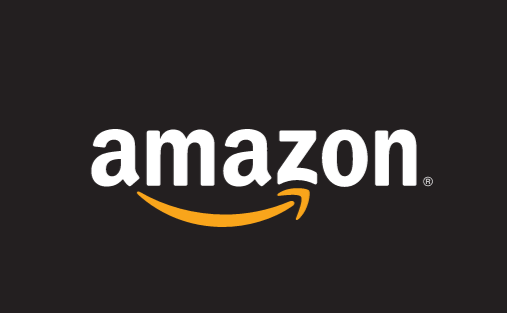
Are you one that has an interest in innovation and perhaps learning more about innovative services through real-life examples?
Then, if you are like us, you’ll pick several businesses that have a high innovation culture and follow their activities. The Amazon innovation culture will be your example of Amazon innovation culture to learn from.
So to bring an important discovery to market, you first need to identify a real-world problem it can solve and connect to engineers who can transform it into a viable product or service. Then you need to find customers who are willing to drop whatever else they’ve been doing and adopt the innovation on a large scale.
The best way to predict the future is to create it.
– Peter Drucker
Check out our thoughts on building innovation.
Amazon, I believe, has one of the very best innovation cultures in an industry built on constant innovation and change. Why may you ask?
There several good reasons. First, as one of the creators of the e-commerce industry, they will know the industry is in its infancy and is built on a foundation of new technology and constant introduction of new ways of doing things … they know their future is based on those trends.
They also know to do new things well, they must be good at trying new ideas in many areas as experiments.
These tests, they realize, will not all work as planned, and a high percentage will fail. They know and accept this without worry.
In this blog, I want to examine a recent e-commerce delivery innovation example that Amazon tried out, the introduction of Amazon lockers.
The concept is pretty simple. Amazon offers customers in select locations the option of having their package delivered to an Amazon Locker instead of to their street address.
When the package arrives, customers receive an email letting them know where to pick it up along with the code to unlock it.
Because most of the lockers are being placed in locations like convenience stores, often the customer can receive their package 24 hours a day.
This is a significant advantage for one segment of their customer base …the one that has trouble receiving their packages – either because they live in an apartment or condo that ‘s hard to deliver to, aren’t home to sign, or because they are worried that their package might be stolen.
But the motive for the experiment is not one based just on customer service alone, as companies like Amazon pay up to 20% more to have packages delivered to a residence.
So, delivering a package to a locker helps Amazon save money too – contributing to offset the costs of installing and maintaining the lockers.
So who should have come up with this potential innovation? FedEx, DHL, UPS, and the US Postal Service all missed this as a possible change that any of them should have developed.

The inspiration for this potential change was sitting in full view all along.
The US Postal Service installed multiple mailbox solutions in many subdivisions long ago to increase efficiency, and make it so that anyone receiving a package receives a key in their mailbox that opens a larger box in the same unit for package retrieval.
When most people think about innovation, they think about startups. And indeed, new firms like Uber, Airbnb, and Space X can transform markets.
But others such as IBM, Procter and Gamble, 3M, and now Amazon have managed to stay on top for decades, even as competitors rise to challenge them and then, when markets shift, disappear just as quickly into oblivion.
While it’s true that small, agile firms can move fast, larger enterprises have the luxury of going slow. They have loyal customers and an abundance of resources.
They can see past the next hot trend and invest for the long term. There’s a big difference between hitting on the next big thing and developing it consistently, generation after generation.
We often think of innovation as inventing new things, but we may be smarter to think of it as recombining old ones.
The truth is that significant breakthroughs usually come from combining ideas from different domains. Often very different, sometimes weird ideas.
Increasingly, companies will succeed and fail according to the quality of the digital experiences that they offer.
So why wait? Go after the shockingly disruptive innovation for your business.
Let’s discuss how you could achieve this goal.
Innovative services … begin with a small problem
Peter Drucker once wrote, “Effective innovations start small. They are not grandiose.” He was spot on.
Take a look at any big thing and, inevitably, it’s modest origins.
Microsoft became one of the world’s most valuable companies by focusing on software, an area so inconsequential at the time that IBM was willing to write it off.
Apple made a splash with the Macintosh to a significant part by capitalizing on innovations that Xerox tossed aside.
The great thing about thinking small is that you can risk failure because failure is sustainable.
You can falter, pick yourself up and try again. Eventually, you’ll get it right, and when you do, there are no limits.
If you can survive, you can thrive.
Innovative services ideas … problems based on customer input
Zara is one of the greatest examples of process innovation.
The founder, Amancio Ortega started his business in the year 1975 as a single store in La Coruña (Spain). Ortega, once a tailor’s assistant learned the value of controlling all steps of the production and distribution process, later he applied it all to the Zara chain. And started refining the process steps based on this critical concept.
Every day, store managers report customer feedback information to headquarters, where it is then transmitted to a large team of in-house designers, who quickly develop new designs and send them to factories to be turned into clothes.
Echevarría said that is because the customer is always determining production — not the other way around. An interesting thought isn’t it?
Every piece of clothing the company makes has, in a way, been requested.
A business model that is so closely attuned to the customer does not share the cycle of a financial crisis.
The production of ideas is just as definite a process as the production of Fords; – James Webb Young
In his book, A Technique for Producing Ideas, James Webb Young explains that while the process for producing new ideas is simple enough to explain, “it requires the hardest kind of intellectual work to follow so that not all who accept it use it.”
It is a lot like the Amazon work culture, eh?
He also explains that working out where to find ideas is not the solution to finding more of them, but rather we need to train our minds in the process of producing new ideas naturally.
The two general principles of ideas:
James describes two principles of the production of ideas, which I like:
An idea is nothing more or less than a new combination of old elements
The capacity to bring old elements into new combinations depends largely on the ability to see relationships
This second one is crucial in producing new ideas, but it’s something our minds need to be trained in:
To some minds, each fact is a separate bit of knowledge. To others, it is a link in a chain of knowledge.
To help our brains get better at delivering good ideas to us, we need to do some preparation first.
The bottom line
Are Amazon lockers a potential moneymaking innovation?
Yes, we think so, many because there are many more add-on applications associated with the electronic side of the delivery to customers yet to come (more on these in a future blog).
Whether they make the transition from interesting experiment or invention to innovation, time will tell.
But the fact that Amazon is expanding their research is a good sign that the transition from invention to innovation will be made.
Remember, to improve your innovation skills build on creative convergence … your ability to new relationships between different ideas to form up a new idea.
So if you want to find a truly great innovator, don’t look for the ones that make the biggest headlines are that are most inspiring on stage. Look for those who spend their time a bit off to the side, sharing ideas, supporting others, and quietly pursuing a path that few others are even aware of.
This innovation of the Amazon locker is an excellent example of creative convergence.
What are some of your experiences with utilizing creative convergence and innovation? Please share one with this community.
Need some help in improving the innovation process for you and your staff? Innovative ideas to help the differentiation with your toughest competitors? Or maybe ways to innovate new products and services?
Call today for a FREE consultation or a FREE quote. Learn about some options for innovation workshops to get noticeable results.
Call Mike at 607-725-8240.
All you get is what you bring to the fight. And that struggle gets better every day you learn and apply new innovative ideas.
When things are not what you want them to be, what’s most important is your next step. Call today.
Test. Learn. Improve. Repeat.
Do you have a lesson about making your innovation learning better you can share with this community? Have any questions or comments to add in the section below?
Digital Spark Marketing will stretch your thinking and your ability to adapt to change. We also provide some fun and inspiration along the way. Call us for a free quote today. You will be amazed how reasonable we will be.
More reading on creativity and innovation from Digital Spark Marketing’s Library:
Learn How to Think What No One Else Thinks
Generating Ideas by Convergent Thinking
Amazon and Managing Innovation … the Jeff Bezos Vision
The Secrets to Building an Innovative Culture
Mike Schoultz is a digital marketing and customer service expert. With 48 years of business experience, he consults on and writes about topics to help improve the performance of small business. Find him on G+, Facebook, Twitter, Digital Spark Marketing, and LinkedIn.
